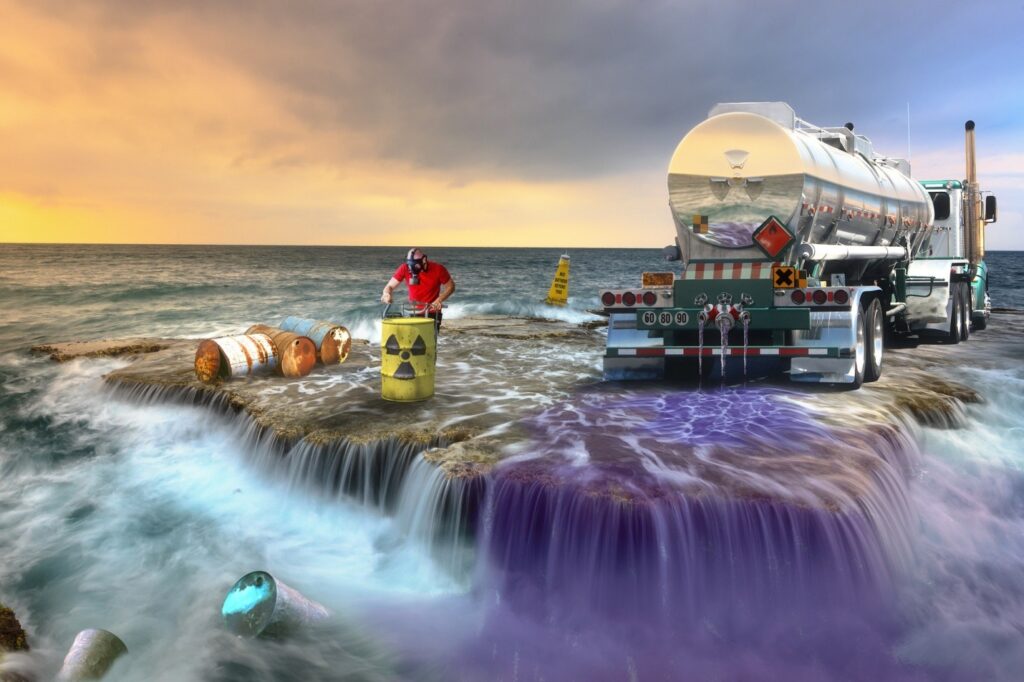9 Simple Techniques For Reclaim Waste
9 Simple Techniques For Reclaim Waste
Blog Article
Reclaim Waste Fundamentals Explained
Table of ContentsThings about Reclaim WasteReclaim Waste for BeginnersThe 10-Second Trick For Reclaim WasteSome Known Factual Statements About Reclaim Waste How Reclaim Waste can Save You Time, Stress, and Money.
Domestic sewer waste refers to the waste and products from a property septic tank. The correct monitoring and disposal of residential sewer waste need fluid waste to be moved to a sewage therapy plant where the correct techniques and devices are used to detoxify and dispose of waste.
Business waste commonly includes potential risks, such as flammable materials or a mix of liquid and solid waste products, and requires a more advanced and detailed disposal process. The disposal of business waste normally includes the purification of waste prior to transportation to guarantee risk-free and correct disposal. Industrial waste is developed from results and runoff of industrial procedures and manufacturing.
This kind of waste can not make use of the very same sewer monitoring transport or procedures as septic or industrial liquids. The hazardous waste monitoring procedure requires the evaluation and screening of liquid waste before it undertakes the disposal procedure (liquid waste removal melbourne). Drainage waste is the fluid waste that comes from drainage and excess stormwater in very booming areas or cities
Overflow waste can create contamination and flooding if not managed correctly. Making certain correct waste monitoring can avoid disasters and minimize ecological injury.
All About Reclaim Waste
Get in touch with PROS Providers today to find out about our waste administration and disposal solutions and the appropriate methods to look after the fluid waste you create.
(https://www.ted.com/profiles/48198485/about)This so-called 'wastewater' is not only an essential source yet, after therapy, will be launched to our land, rivers or the sea. Utilized water from toilets, showers, bathrooms, kitchen sinks, washings and industrial processes is understood as wastewater.

water made use of to cool equipment or tidy plant and tools). Stormwater, a form of wastewater, is runoff that streams from farming and metropolitan areas such as roofings, parks, gardens, roadways, paths and rain gutters into stormwater drains, after rain. Stormwater flows without treatment straight to local creeks or rivers, eventually reaching the sea.
Not known Details About Reclaim Waste
In Queensland, most wastewater is treated at sewer therapy plants. Wastewater is delivered from residential or commercial this link sites through a system of sewage systems and pump terminals, called sewerage reticulation, to a sewer treatment plant. Neighborhood governments construct, preserve and operate most sewage treatment plants. Operators are accredited under the Environmental Management Act 1994 to discharge cured wastewater at an acceptable ecological standard right into rivers.
The Division of Natural Resources encourages regional federal governments about handling, operating and keeping sewerage systems and treatment plants. In unsewered locations, city governments may require homeowners to set up individual or house sewage therapy systems to treat domestic wastewater from bathrooms, kitchens, restrooms and laundries. The Division of Natural Resources authorizes the usage of house systems when they are confirmed to be efficient.
The majority of stormwater receives no treatment. In some brand-new class, treatment of some stormwater to eliminate clutter, sand and crushed rock has begun using gross pollutant traps. Wastewater treatment happens in four phases: Removes strong matter. Bigger solids, such as plastics and various other things wrongly released to drains, are eliminated when wastewater is gone through displays.
Wastewater after that flows into huge containers where solids settle and are eliminated as sludge. Oil and scum are skimmed from the surface area. Uses little living microorganisms called micro-organisms to damage down and eliminate remaining dissolved wastes and great particles. Micro-organisms and wastes are incorporated in the sludge. Gets rid of nitrogen and phosphorus nutrients that could cause algal blooms in our waterways and intimidate water life.
An Unbiased View of Reclaim Waste
Nutrient removal is not offered at all sewage treatment plants due to the fact that it calls for expensive specialist equipment. Clear fluid effluent created after therapy may still have disease-causing micro-organisms - liquid waste disposal.

The majority of wastewater flows right into the sewage system. Under the Act, local federal governments administer approvals and permits for eco relevant activities (Periods) involving wastewater launches that may have a local impact.
The smart Trick of Reclaim Waste That Nobody is Talking About
Otherwise, samples are considered lab evaluation. Commonly many examinations are needed to establish the levels of each of the various contaminants such as oils, hefty steels and pesticides in water. Tracking provides factual info concerning water quality and can verify that licence problems are being satisfied. The info acquired via tracking supplies the basis for making water high quality decisions.
Report this page